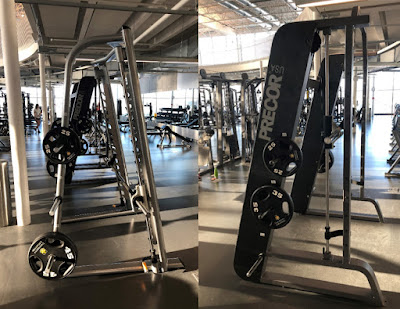Is it possible to grow new muscles fibres?
Muscle Hypertrophy vs Muscle Hyperplasia
When we talk about muscle growth, we almost always are speaking about muscle fibre hypertrophy. However, there is another controversial term called Hyperplasia. They sound similar, and they look the same on the outside, but the process is quite different.
What's the difference?
Muscle fibre hypertrophy is the increase in the diameter of a muscle fibre. Diameter fibres grow by increasing the size of contractile proteins or increasing fluid or enzymes in muscle cells. This growth results in an increase in the cross-sectional area of the muscle.
Hyperplasia is the increase in the number of muscle fibres resulting in similar growth. Aesthetically, both would look the same, appearing as larger muscles.
Does Hyperplasia actually exist?
The term hyperplasia is often associated with tumour growth via uncontrolled cellular Hyperplasia, but skeletal muscle hyperplasia has no association with tumour growth. 20-25 years ago, skeletal muscle hyperplasia was considered a myth. There is still limited evidence that muscle fibre hyperplasia exists in humans, but it has been found that bodybuilders do possess more (and larger) muscle fibres than the average person. The question remains if bodybuilders create additional muscle fibres or are genetically gifted with extra muscle fibres. Research shows muscle hyperplasia in animals such as birds, mice, cats, and fish. Each of these studies used different methods, but all of them, except for mice, used a form of resistance training, including adding additional weight to birds' wings. In mice, the researchers reduced myostatin levels which is a protein associated with limiting muscle growth. In human studies, the results are sparse; however, there is one study, for example, where there was unexplained growth. This study measured growth in the tibialis anterior on the front of the shin, where the non-dominant leg received a greater workload. There was significant growth in the cross-sectional area of the muscle that was greater than the growth of the muscle fibres. This additional increase in cross-sectional area may have been the result of Hyperplasia.
What causes Hyperplasia?
If Hyperplasia exists, the theory that supports this is called Cellular Domain Theory which states that a nucleus can only occupy a certain amount of a cell. So, if there is enough growth, the cell must split and create a new cell to make additional space. The muscle fibre would react the same way, and it would hypertrophy to a given limit, then it would need to split and create a new muscle fibre to allow more growth. If this is the case, we can say for sure that it would take a very long period of training to reach a point where skeletal muscle hyperplasia occurs.
Based on animal studies, Hyperplasia is caused by extreme mechanical loads when the muscle is lengthened. To apply this to your training, you would implement strategies such as weighted stretching or pause reps. Not all joints are safe to use these strategies. The shoulders and ankles are good joints for this type of training, so the chest and calves are great muscles to target this way. You can also use this on your hamstrings with deficit Romanian Deadlifts, provided you don't have any lower back pain.
While the evidence is limited that these techniques would create muscle fibre hyperplasia, implementing different training methods is still beneficial for increasing the cross-sectional area of a muscle, even if it is standard muscle fibre hypertrophy. For more information, including exercise examples and prescriptions, check out our video below.



Well Thank You for Awsm knowledge. People who are not getting good gains should really know the difference between muscle hypertrophy and muscle hyperplasia to further work on it and get good results.
ReplyDeleteThose who not have the good knowledge about the fitness terms and process well can have personal trainer plantation. that will be beneficial for you to get good results and faster growth.
Thank You
Protein, along with vitamins and minerals, can be found in fruits and vegetables.
ReplyDeleteRead More >> https://www.englandnewsportal.com/news/pre-sales-open-indias-tastiest-vegan-protein-powder-with-257-grams-of-protein-per-serving20220406113451/